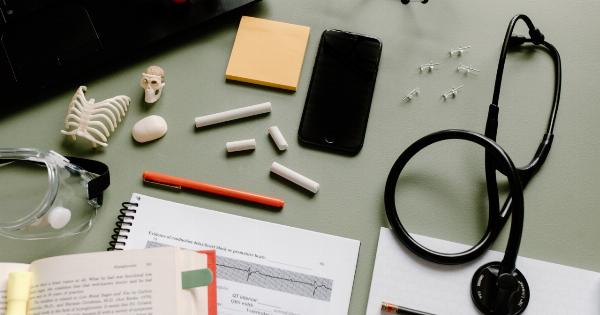Orgasms are a natural and pleasurable part of human sexual experience. While it is commonly known that men experience orgasm through ejaculation, the female orgasm is often considered more complex and less understood.
In this article, we aim to shed light on how a woman’s body reacts during orgasm, using a detailed chart.
1. Stage One: Sexual Arousal
The journey towards orgasm begins with sexual arousal. This can occur through physical stimulation, such as kissing, touching, or oral sex, or through psychological factors such as sexual fantasies or erotic thoughts.
During this stage, a woman’s body experiences several physiological changes:.
- Increased Heart Rate: The heart rate accelerates, pumping oxygen-rich blood to various parts of the body.
- Swelling of the Clitoris: The clitoris, a highly sensitive organ located above the opening of the urethra, enlarges and becomes more erect.
- Vaginal Lubrication: The walls of the vagina produce lubrication, reducing friction and increasing comfort during sexual activity.
- Dilated Blood Vessels: Blood vessels leading to the genital area widen, leading to increased blood flow and heightened sensitivity.
2. Stage Two: Plateau
The plateau phase refers to the buildup of sexual tension just before orgasm. During this stage, the physiological changes initiated in the previous stage continue to intensify:.
- Increased Blood Flow: The increased blood flow to the genital area leads to further engorgement of the clitoris and vaginal walls.
- Breast Changes: The breasts may become fuller and more sensitive as blood flow to the nipples increases.
- Elevated Muscle Tension: Muscles throughout the body, particularly in the pelvic region, tense up in readiness for orgasmic release.
- Heightened Pleasure: Sensations of pleasure peak, leading to a sense of anticipation and increased sexual arousal.
3. Stage Three: Orgasm
The orgasmic phase is characterized by intense sexual pleasure and release of built-up sexual tension. The following physiological changes occur during orgasm:.
- Rhythmic Contractions: Muscles in the pelvic region, including the uterus, vagina, and anus, contract rhythmically and involuntarily.
- Elevated Heart Rate: The heart rate reaches its peak during orgasm, creating a sensation of pounding in the chest.
- Breathing Changes: Breathing can become faster and more irregular during orgasm.
- Release of Endorphins: The brain releases endorphins, which contribute to feelings of pleasure, euphoria, and overall well-being.
4. Stage Four: Resolution
After orgasm, the body enters a refractory period where it gradually returns to its normal, pre-arousal state. The following changes occur:.
- Decreased Sexual Tension: The heightened sexual tension experienced before orgasm dissipates.
- Relaxed Muscles: The muscles that tensed up during orgasm begin to relax.
- Reduced Heart Rate: The heart rate gradually returns to its resting state.
- Feelings of Well-being: The release of endorphins during orgasm can induce a sense of relaxation and contentment.
Understanding how a woman’s body reacts during orgasm is essential for promoting sexual well-being and fostering open communication with partners.
Empowering individuals with knowledge about their own bodies leads to better sexual experiences and overall satisfaction.




























